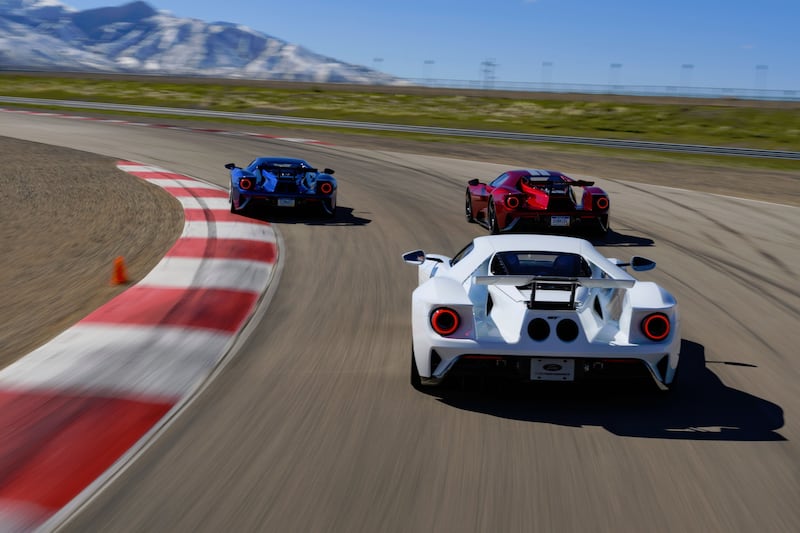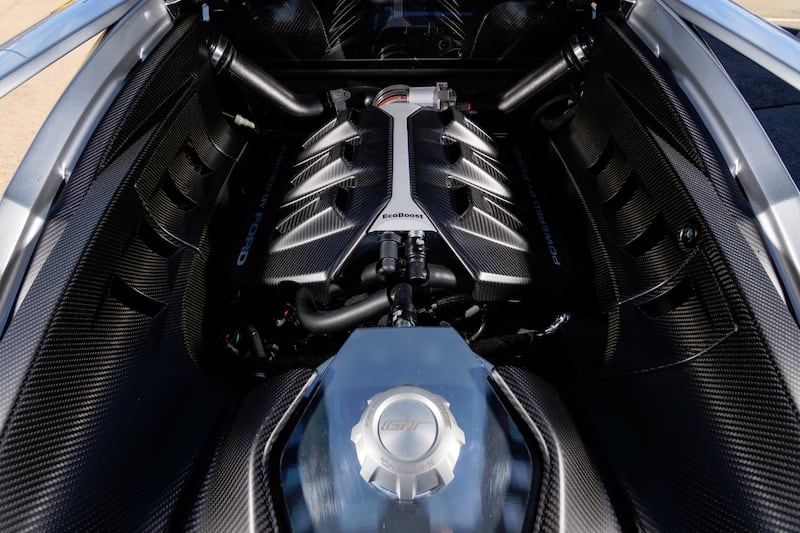TUCKED away in the bottom corner of the Ford website, parked incongruously beside the Ranger pick-up, is a model simply called the 'Ford GT', writes William Scholes.
It is an odd juxtaposition because while the Ranger is, well, as straightforward and no-nonsense as a commercial workhorse can be, the otherworldly GT is the most high-tech car Ford has ever built.
This year's production run is already sold out - a £320,000 price tag isn't an obstacle in the high-octane world of the hypercar - and the wealthy enthusiasts who buy these sorts of cars highly prize its blend of race-proven engineering and road-legal sensibility.

The race version of the GT has already won its class at the Le Mans 24 Hours, as well as a number of other notable endurance racing performances, and Ford says technology from the GT will filter into its road cars.
"When we began work on the all-new Ford GT in 2013, the team had three goals," explained Raj Nair, Ford executive vice president of product development and chief technical officer.
"The first was to use it as a training ground for our engineers as we develop future engine technology and stretch our understanding of aerodynamics.
"Then, to push the boundaries of advanced material usage, such as lightweight carbon fibre.
"Finally, we set out to win the Le Mans 24 Hours, referred to by many as the ultimate test of endurance and efficiency."
As an example of this tech transfer, Ford points to how the Focus RS already has the 'track mode' from the GT, and that the new Fiesta ST will get the same feature when it arrives next year.
Using aerodynamics to improve a car's handling as well as its efficiency was a part of the GT team's brief.
It takes controlling airflow to an extreme level - its aerodynamics change on demand to meet varying driving conditions, thanks to moveable elements around the body, including special ducts in the front, and a large deployable wing.
The flaps open and close depending on whether GT's wing is up or down, so the car remains aerodynamically balanced from front to back at all speeds; when the wing is up, the ducts close to increase downforce, and when the wing is down the ducts open to decrease downforce.
And in a patent-pending piece of design, even the shape of the aerofoil itself changes shape.
The race version of the GT has already won its class at the Le Mans 24 Hours, as well as a number of other notable endurance racing performances, and Ford says technology from the GT will filter into its road cars
Extensive use of carbon fibre in the bodywork allowed the designers to use shapes that would have been either impossible or hugely expensive to craft from steel or aluminium.
Rather than the V8 or V12 engine that was once de rigueur in a supercar, the GT has a six-cylinder unit, thus proving that even the very quickest cars are not immune from the current 'downsizing' trend that has already spread into showrooms with 'ordinary' cars.
There's nothing too small about the 3.5-litre's twin-turbocharged outputs, though - 638bhp isn't too shabby...
Ford says that by adopting a more compact six-cylinder engine, the GT's aerodynamics were further improved than they might have been for a V8-engined car because the bodywork could be wrapped more tightly around the chassis.
"We pushed the engine's limits beyond what we might consider in traditional development programmes, which is important as we continue to advance EcoBoost technology as a centrepiece of the company's global line-up," said Ford engine boss Bob Fascetti.
To counter the lag between applying the throttle and the engine responding that is common with turbocharged engines, Ford came up with ant-lag technology that works by keeping the throttle open when the driver is not pressing the accelerator pedal.
The fuel injectors are off, but turbo speed and boost are maintained for faster engine response and acceleration as soon as the driver hits the accelerator pedal.

Other tech includes hydraulic suspension, which changes ride height with a turn of the knob that adjusts the GT's drive modes.
The suspension lowers the supercar from normal mode into track mode - a 50mm difference the driver can see and feel.
Track mode raises the wing and closes the front splitter ducts, delivering optimal downforce for spirited, closed-course driving, together with changes in spring rates, damper settings and the active aerodynamics.
Another feature of the hydraulic suspension is a front-lift mode that helps the GT clear speed bumps and angled driveways.
This isn't a feature that the driver of a Ranger pick-up is ever likely to need, but it will be fascinating to see how much of the GT's other engine, suspension, construction and aerodynamic technology eventually percolates into Ford's more humdrum vehicles.









